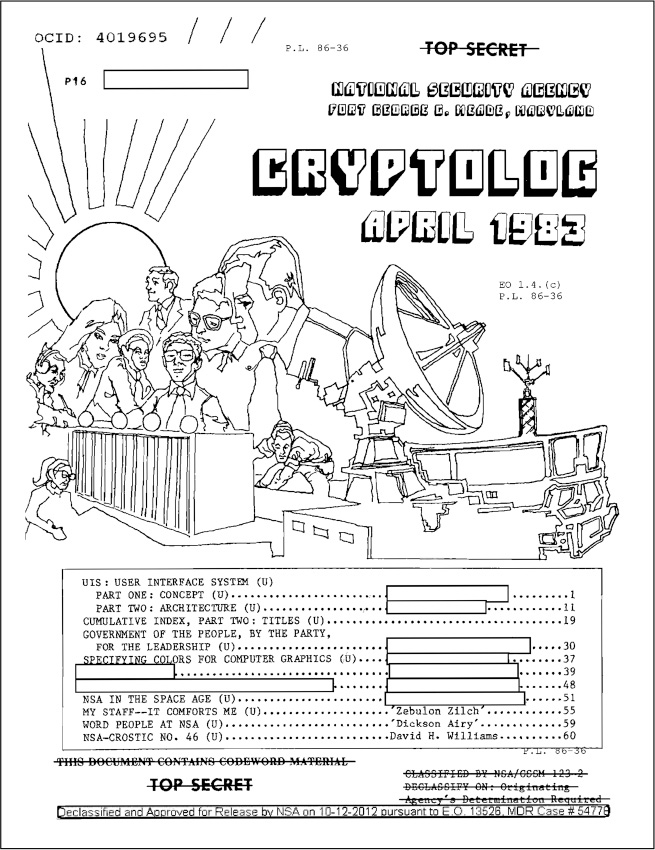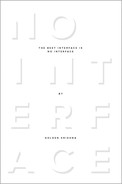8. The Screenless Office: The best interface is no interface
Not long ago, our lives were filled with paper.
Gutenberg’s Bible press capitalistically evolved in the Western world over a few centuries from a device to spread internationally influential moral teachings to typewriters, dot matrix printers, and fax machines spreading internationally influential corporate memos about low-hanging fruit, running it up the flagpole, and the bottom line.1 According to the US Environmental Protection Agency (EPA), four million tons of office paper had been wasted in the United States by 1980.2
For some, even the American dream had become paper based.
Put in a good, honest, and hard day’s work at a busy mail room on the ground floor of a beige office park—couriering messages in interoffice manila envelopes from one cubicle to another—and eventually you might just climb up the corporate ladder. Mail boy to the boardroom.
The opening of a 1982 New York Times editorial described the feeling of the time:
“New York is a city where dreams come true, where a girl named Barbra from Brooklyn can become a household name, where a mailroom clerk named Manilow can eventually make platinum records and lots of money, a city of limousines with gray-black glass in the windows and parties with paparazzi.”3
Move to New York City, work with paper, and one day you might just be the next Barry Manilow.
The paper-based mail room fantasy even dominated book sales. In 1981, Iris Rainer’s The Boys in the Mail Room—a trashy, raunchy, homophobic story about a group of boys who rise from Hollywood’s mail room to success in the industry—was the ninth best-selling paperback book in the United States.4
But with amazing, emerging technology in mind, some of us dreamed of something better. A different path. They thought the best paper was, well, no paper.
In 1975, Businessweek published “The Office of the Future,” describing a distant, “paperless” world. The then-dreamers imagined fantasy scenarios about 1995 when a desk would be transformed from a resting place for piles of paper to a surface for a “TV-like display” with a typewriter keyboard that could access endless electronic file archives.
Following is a 1975 quote from one of those dreamers, George E. Pake, the former head of Xerox PARC:
“I’ll be able to call up documents from my files on the screen, or by pressing a button,” he says. “I can get my mail or any messages. I don’t know how much hard copy [printed paper] I’ll want in this world.”5
In 1980, the Economist printed its own take with “Towards the Paperless Office,” and a business brief with a section about the “Death Sentence for Paper Shufflers.”
From the imaginative latter, written twenty-three years before Skype:6
“He checks his mail by displaying it on the screen—President Clive Greaves in the New York office regrets he will not be able to attend the video teleconferencing session at 2pm (GMT) but will fax his revised forecasts beforehand.”7
They looked past the trends of the day and imagined something better.
But there were plenty of realists. Naysayers.
Oh, yeah? What about paper napkins, huh?? Or paper towels? Are you telling me you’re going to replace toilet paper?! Those things will stay, along with my Wite-Out, carbon copy paper, and interoffice memos!
Sure. There will always be a number of people who can’t see past the tools of the day—tools that could never go away, like paper—while searching for and shouting out exception cases. And there will always be people who are looking out for our “best interests,” like, say, the National Security Agency (NSA).
In 1974, the United States government’s most secretive agency started publishing a top-secret internal newsletter. The major general of the US Army called it “a new vehicle for the interchange of ideas.”8 It was a fascinating moment in the history of the NSA.
The publication discussed the inner workings and internal thoughts of their multidisciplined workplace. It had opinion pieces about employees’ roles as collectors, analysts, and “cryppies,” and the thinking behind some of the country’s most well-kept secrets of code-cracking and encryption.9 It was called Cryptolog. Recently, parts of it became declassified.
This is the cover of the April 1983 issue of Cryptolog:

(Source: NSA)
And it opened with an editorial rant about the paperless office.
After they took an anecdotal “stroll through the local supply room,” the editorial staff at the NSA reminded Cryptolog readers that a paperless world could never be realized because—as evidenced in their own supply room—people still care deeply about paper forms and memos, which is why “one can still hear serious debate about which brand of ‘white out’ does the best job.”*
* white out: a “correction liquid.” Sort of like a mini bottle of white paint that comes with a brush you can use to paint over mistakes on a piece of paper in case you accidentally write that you were born in 1992 instead of 1912.
Clear, flawless logic.
“The next time you wander through your favorite supply room,” they had warned, “take a close look at the tiers of forms arrayed there. Do you think they will ever go away?”
Here’s the entire, magical editorial:
The other day we saw a phrase that we haven’t seen for a while: “paperless office.” It was a popular term a while back, and was sometimes called the “paperless society.” It was used to refer to that future day when all paper would be replaced by some other media, such as cathode ray tubes (TV) or other display devices.
Just to see if something was happening that we hadn’t heard about, we took a stroll through the local supply room. The shelves were still filled with paper supplies, and with things that make marks on paper. Looseleaf notebooks seem to disapper from the shelves as fast as the supply folks can stock them. One can still hear serious debate about which brand of “white out” does the best job. Erasers, paper clips, rulers, IN (and OUT) baskets, sheets of press on letters, scissors . . . the list goes on and on. Paper does not seem to be on the way out just yet. Not around here, anyway.
There is a growing sentiment that we will never reach that paperless state. It is not, after all, a question of technology. In a recent survey of computer editing systems, the authors finished with the somewhat guilty admission that, in the preparation of their report, they had consumed just under a mile of paper. We have no statistics to support it, but we have the distinct impression that we are using more paper per capita, not less.
New technology does not have to replace the old; it sometimes finds its niche alongside the old. Office automation seems to be aimed at getting machines to write down, on paper, what used to be written down by some other method, on paper. Some people think office automation will use more paper, not less.
The next time you wander through your favorite supply room, take a close look at the tiers of forms arrayed there. Do you think they will ever go away?
With emerging technology in mind, some of the dreamers thought differently, but they had little luck in the beginning. For years, paper usage increased, and the naysayers grew confident in their opinions. Four million tons of office paper usage increased to six million by 1990, and seven million by the year 2000.
Then, roughly two decades after the miracle of WIMP (windows, icons, menus, pointers)—with slow-moving corporate policy shifts in place, a generational change in the workforce, and a few awkward years of email footers that asked you to “please consider the environment before printing”—paper consumption finally started to drop.

As futurist Paul Saffo once said, “You can never go wrong by betting that change will go slower than everyone expects.”10

(Source: US Office of The Federal Register)
*Includes finance, insurance, real estate, professional and business services, membership organizations
Measured by pounds per white-collar worker, the amount of paper usage in the office has been dropping every year since 2001.11
And so, as workplaces have finally embraced new processes for working without paper, the demand for paper has drastically fallen.12
As a result of finding ways to drop paper for digital, we can now search more easily, communicate more rapidly, and store incredible amounts of data painlessly.
But today, instead of paper, our lives are inundated with screens.
Your workplace isn’t any good if you don’t have at least two monitors on your desk. Your smartphone isn’t decent if it’s not at least five inches long. Your car is considered outdated if doesn’t have a touchscreen. And if trends continue, your wrist will soon be unfashionable if it doesn’t have a screen slapped on it, and your face will be outdated without an interface projected in front of your eyes by a face computer.
American children aged 0 to 8 are already estimated to be exposed to screens for over 2 hours a day.13 Kids age eight to eighteen for an average of seven and a half hours a day.14 And adults? We’re exposed to screens for eight and a half hours a day.15 Odds are that those numbers have increased by the time you’ve started reading this book.
The sad thing is, a lot of the screen time is a burden. A hurdle for our goals. As Don Norman wrote in 1990, when these digital interfaces were just beginning to take over our lives, “The real problem with the interface is that it is an interface. Interfaces get in the way. I don’t want to focus my energies on an interface. I want to focus on the job . . . I don’t want to think of myself as using a computer, I want to think of myself as doing my job.”

(Source: Biologist16)
Interfaces have gone far beyond the workplace. They now steal us away from seeing, interacting, and talking to the people around us; they hinder our community-building and our intimate relationships.
At one time, our lives were filled with paper, so we dreamed of a paperless world. Now, instead, our lives are filled with screens. And I think it’s time to dream of a screenless world. I sincerely think the best interface is no interface, and I’d like to show you how we can get there.
Let’s end the confusion between UX and UI. Let’s stop slapping screens on children’s toys. Let’s prioritize personal goals over addiction. Let’s get our lives and our health back in balance by interacting with the real world instead of staring into a light, checking new notifications. Let’s think beyond screens.
The best result for any technology is to solve meaningful problems in impactful ways.
The best design reduces work.
The best computer is unseen.
The best interaction is natural.

